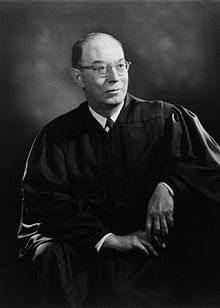
The great Second Circuit Court of Appeals Judge Henry Friendly recognized the fallacy behind the commonly held notion that a small risk of harm should be considered a limiting factor in imposing liability upon a wrongdoer.
“We see no reason why an actor engaging in conduct which entails a large risk of small damage and a small risk of other and greater damage, of the same general sort, from the same forces, and to the same class of persons, should be relieved of responsibility for the latter simply because the chance of its occurrence, if viewed alone, may not have been large enough to require the exercise of care…[t]he existence of a less likely additional risk that the very forces against whose action he was required to guard would produce other and greater damage than could have been reasonably anticipated should inculpate him further rather than limit his liability.” Petition of Kinsman Transit Company, 338 F. 2d 708, 725 (2nd Cir. 1964)(Friendly J)
Judge Friendly had the good and great insight to recognize that it’s an aggravating (not exculpating) factor when a wrongdoer ignores a small risk of potentially great harm. If the wrongdoer has to guard against a small harm that’s readily anticipated, then failing to guard against an even greater harm, one not so easily anticipated, merely adds another dimension to his degree of culpability. Too often we see courts wrongly turn this maxim on its head: using a slight risk of harm as means to justify wrongdoing. Judge Friendly insightfully perceived otherwise, noting that such additional risk “should inculpate him further rather than limit his liability.”
A decision-maker should take into account the most likely risks his conduct poses as well as the potentially most harmful risks, however slight. Notice the care by which Judge Friendly initially couches his remarks: there must be a risk “of the same general sort, from the same forces, and to the same class of persons.” Limitations inherently arise by virtue of such classifications: Judge Friendly, it would seem, is keeping close reign on matters. Notice though his phrasing a little later where he writes “would produce other and greater damage than could reasonably be anticipated.” Judge Friendly here concedes that some risks are highly improbable, perhaps so remote that a reasonable person could not be charged with anticipating them. But all that suggests is there are unknown consequences to wrongful acts; and this, Judge Friendly suggests, simply makes the wrongful conduct worse. As well, Judge Friendly seems to indicate the wrongdoer should not be able to benefit by not having to be held responsible for unanticipated harms that he himself has caused. To insulate the wrongdoer from liability for unanticipated harms, he implies, would cloth the wrongdoer in an immunity for his most harmful conduct, essentially encouraging those who create risks not to search too carefully to find out what harm they are (or will be) causing. Wrongdoers should be encouraged to act reasonably and it is no defense to them that the harm they caused turned out to be worse than they imagined. A failure to heed a remote wrong, suggests Judge Friendly, creates no defense to a negligent and injury-causing act. Judge Friendly convincingly makes the case that remote harms are actionable, notwithstanding they typically occur beyond the ken of one’s first glance.




